A ‘One-Two Punch’
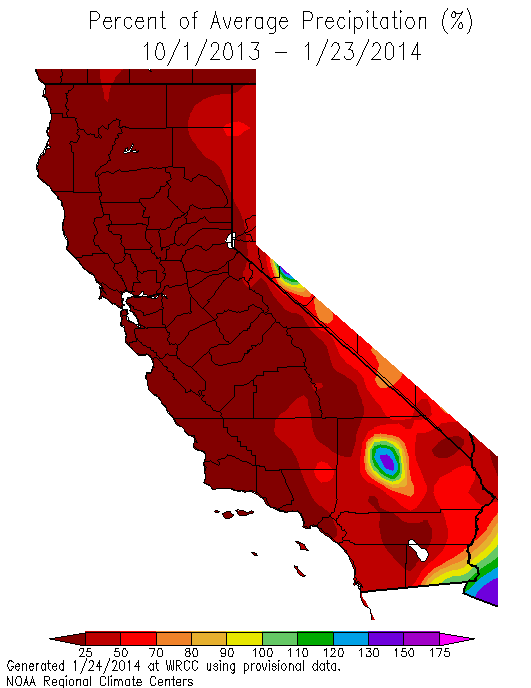
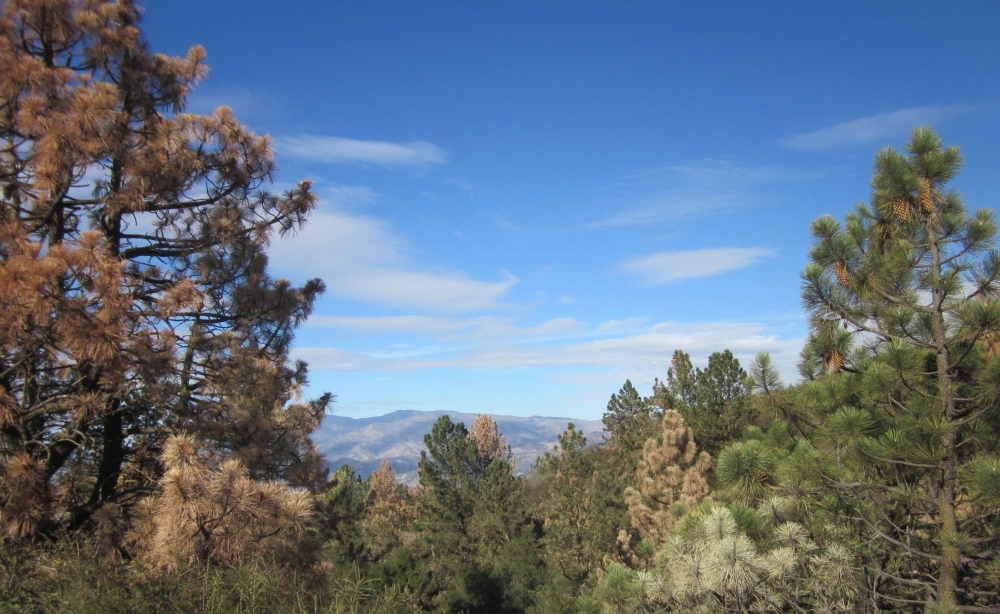
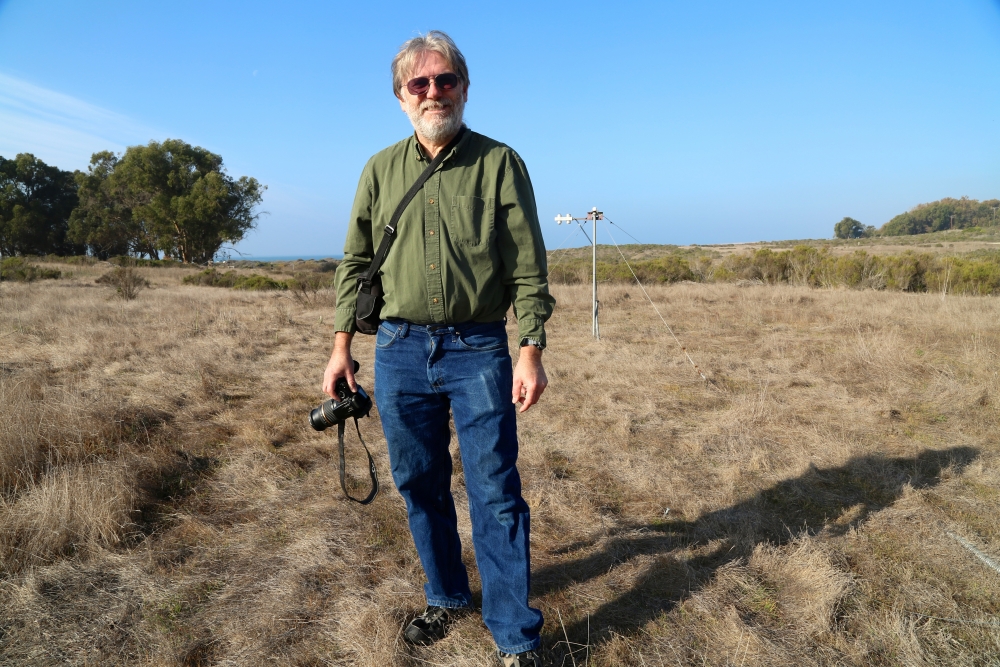
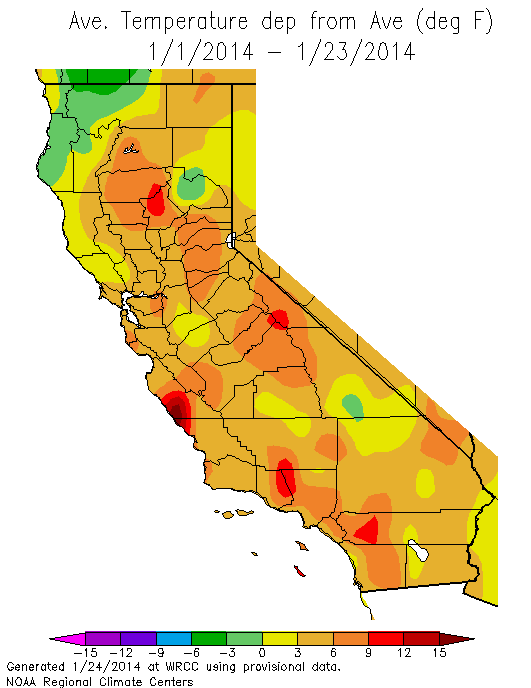
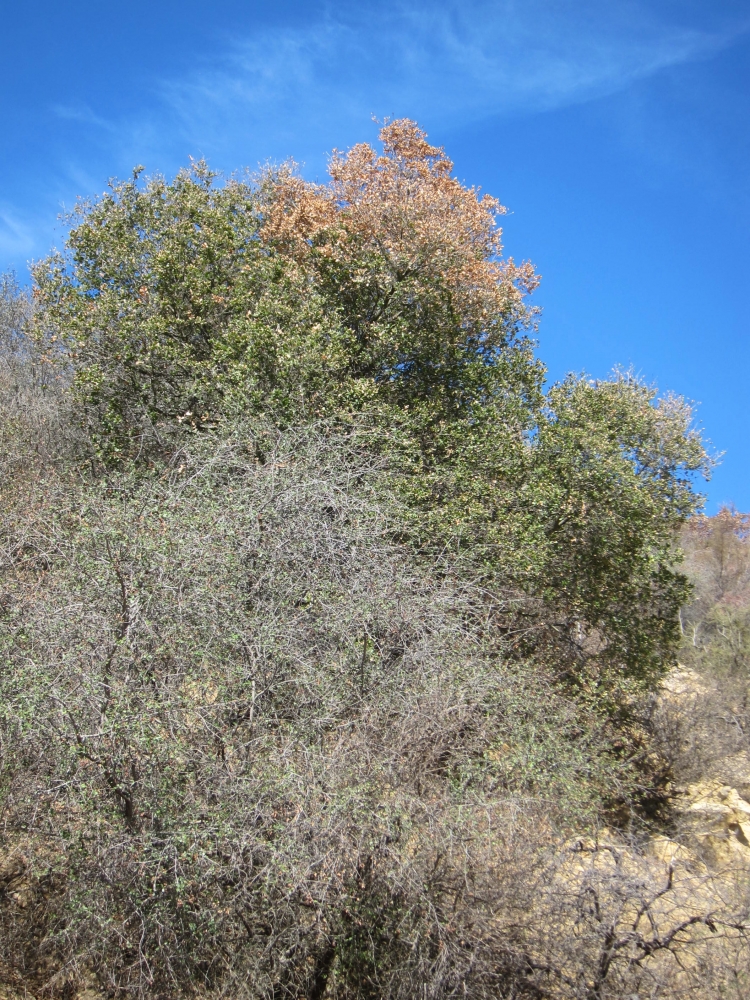
California being in the clutches of drought — as it is today — is nothing new. From prehistoric droughts to so-called “megadroughts” that strangled the state some 1,000 years ago, to more recent extreme dry periods in the late ’70s and early ’90s, drought happens.
This time around, however, California has more than 38 million residents with water needs and is grappling with a troubling trend that’s in play around the world: global warming.
“It’s not just that there is low precipitation but low precipitation in a warming climate,” said Frank Davis, director of the UC Santa Barbara-based National Center for Ecological Analysis and Synthesis. “The combination of warm and dry has a lot of ecological impactions. It puts greater physiological stress on, for example, forest trees. Also, when it’s dry and warm, we start to see really strong impacts on fresh-water systems, like those that spawn salmon. Being really dry plus warm is a one-two punch.”
An ‘Alarming Situation’
Along the makeshift path heading toward the bluffs at Coal Oil Point off the Santa Barbara coast, dirt grates underfoot; pale withering grasses crunch and crumble. In the nearby foothills east of town, the chaparral is behaving as if it’s summertime and some trees are starting to die.
“This is just weird,” said UCSB geography professor and department chair Dar Roberts on a recent trip to Coal Oil Point Reserve, one of six natural reserves administered by the campus and used as outposts for environmental research. “Normally at this time of year there is a nice, lush, green cover of plants at this site. … This isn’t January. This is August.”
The oceanfront reserve is home to one of five climate monitoring stations run by UCSB’s geography department to measure temperature, wind speed, precipitation, fog and soil moisture as a means of studying climate change. These days they’re also providing insight into drought.
“From the point of view of drought, they’re some of the most important measurements we have,” said Roberts. “From a plant’s perspective, it’s the moisture in the soil that matters more than anything else. And we’re at a lower level of soil moisture right now than we have been in three years — drier than even a typical summer. Our other sites are telling the same story.”
Two of those other sites are in the Santa Barbara foothills, in the same vicinity where UCSB’s Carla D’Antonio, environmental studies department chair and professor, is engaged in an ongoing study of chaparral. Aiming to gauge the plants’ response to dry conditions over time, D’Antonio found that the current drought provided an unexpected but scientifically serendipitous opportunity to also test their survival skills.
“Lots of chaparral plants are already adapted to pretty harsh conditions,” said D’Antonio, who is also a professor of ecology, evolution and marine biology. “It just so happens we are now following them through a very intense drought. The plants are very, very stressed. We’re also seeing a lot of mortality of trees. Coast live oak trees are dying. A lot of manzanitas are dying on some of the slopes above Santa Barbara. I think we really need, as a region, to be thinking about the potential for catastrophic wildfire. Fire season is now, still; we’re no longer having a temporal escape from fire season.
“One of my students has been tracking fuel moisture in the living vegetation and those levels are lower than — and have been since last spring — a critical threshold below which most of the major fires in Santa Barbara have occurred,” she added. “It’s a pretty alarming situation.”
The ‘Probability of Extremes’
Similar concerns are emerging across California, where the governor has declared a drought emergency and characterized the protracted dry spell as the worst, statistically, since the state started keeping rainfall records in 1895.
Blame Mother Nature, who has essentially erected a roof over the entire state — and parts of the Pacific Northwest — by way of a high-pressure system that is deflecting would-be storms to Alaska and beyond. The same blocking ridge is responsible for the extreme cold, the so-called Polar Vortex, still plaguing parts east.
“It’s very unusual to see this blocking for such a long period — very unusual,” said Charles Jones, an associate professor of geography at UCSB who studies climate change and precipitation worldwide. “In order to get rain in California, this pattern needs to be broken somehow, and it’s been hard for nature to do that this year.”
And it’s not just California, or the western U.S. In fact, it’s not just North America. Parts of South America, South Africa and Australia are all in the midst of droughts of their own, seeing essential crops decimated, pastures drying up and livestock dying.
“The issue has been raised: Could this be linked to global warming?” said Leila Carvalho, also an associate professor of geography and co-principal investigator, with Jones, of UCSB’s Climate Variations and Change research group. “You can’t say one event is related to global warming; that doesn’t make sense. What does make sense is to say that because the planet is warming, we are seeing more conditions for this type of event to occur. What global warming does is increase the probability of extremes to occur, so these events may become more frequent.”
A Call to Action
“It’s something we should get used to,” concurred UCSB climatologist Joel Michaelsen, a professor of geography who used tree-ring records to study precipitation in Santa Barbara and Ventura counties. “Drought operates on a time scale that allows us to forget — over 20 to 30 years. Then it hits and people say, ‘My gosh, I wasn’t expecting this.’ You should have been. We should have been.
“In the overall picture, I don’t think this drought is particularly abnormal. But with a warming climate, there will clearly be severe pressures on water supply,” added Michaelsen, who has just been appointed UCSB’s interim executive vice chancellor. “The most serious pressures will not necessarily be produced by reduced precipitation — that’s an uncertain part of the equation. What is quite certain is that our storage and snowpack will be significantly reduced. And that will have a much bigger impact on water supply than this highly variable precipitation regime.”
As stores of water in the West are reduced — whether by usage in drought, evapotranspiration in heat or both — warming temperatures also see the snowpack on the wane. The two phenomena together could put extreme strain on water supplies, which holds implications for ecosystems, industries and people alike.
Even at their most severe, the droughts of decades and centuries past did not occur in tandem with today’s degree of temperature change or have to contend with the demands of a population that in California alone now numbers above 38 million residents. As needs for water grow ever greater, so too do the potential threats to its supply.
“It’s not just the low precipitation but also vulnerability and demand,” said NCEAS’ Davis, who is also a professor of ecology and conservation planning at UCSB’s Bren School of Environmental Science & Management. “There are more people living in the wildland-urban zone in California. There are more opportunities for ignitions to occur and more people vulnerable to fires when they do occur. And drought makes fires, once started, harder to control. All these things compound the impact of drought.
“This is something that we just have to confront increasingly,” he added. “Bottom line: It’s all about reforming the way we manage water and reforming the way we’re managing and restoring ecosystems so that we’re not as heavily impacted by these droughts and are able to recover without such serious ecological and economic effects. I’m not ready to say it’s the new normal, but I am ready to say we really need to be thinking about risk management — and we need to do so in an aggressive and systematic way in order to build more resilience into all these systems.”



